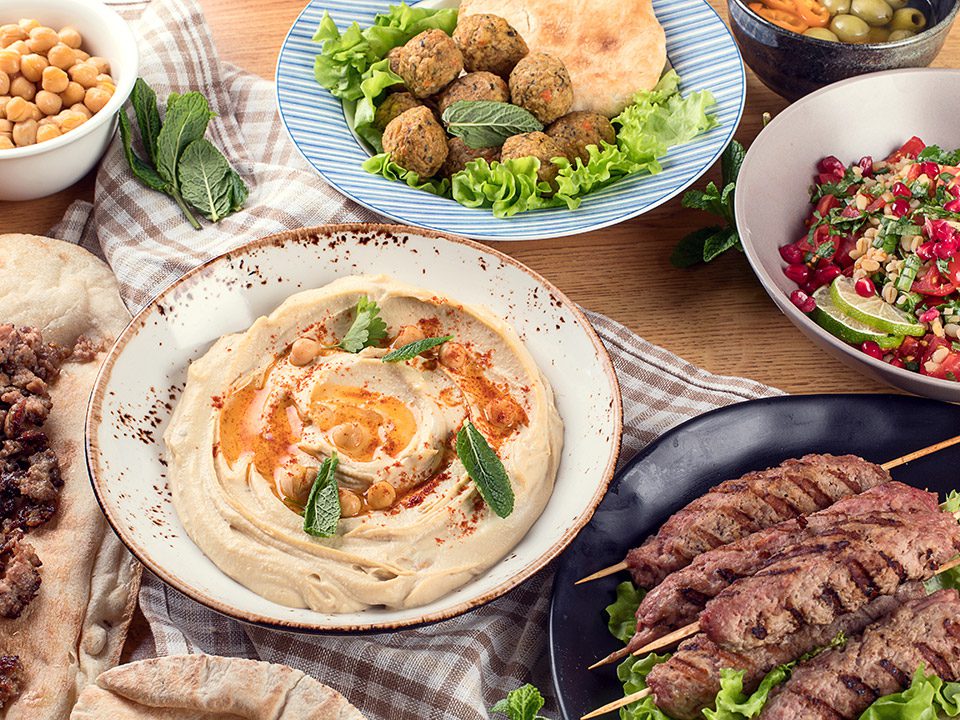Nestled in the heart of the Middle East, Lebanon offers more than just picturesque landscapes and a rich tapestry of history. Its culinary traditions, honed over millennia and influenced by countless cultures, have captured the hearts and palates of food lovers worldwide. But what is it about Lebanese cuisine that transcends borders? Let’s embark on this mouthwatering journey.
1. The Essence of Lebanese Cuisine
At its core, Lebanese food is about freshness, flavor, and sharing. Most meals revolve around a communal setting, with plates filled with an assortment of dishes that emphasize fresh vegetables, grains, and lean proteins. The liberal use of olive oil, garlic, and lemon lends a tangy, aromatic character to the dishes.
Key Ingredients:
- Olive Oil: Used both for cooking and drizzling, its richness brings out the flavors.
- Lemon: The tangy zest is a frequent dressing, making dishes lively.
- Garlic: Found in many marinades and sauces, adding a spicy undertone.
- Parsley & Mint: These herbs freshen up salads and mezzes.
2. Popular Lebanese Recipes
- Hummus: A creamy blend of chickpeas, tahini (sesame paste), lemon juice, and garlic. Best served with olive oil and warm pita bread.
- Tabbouleh: A vibrant salad made from finely chopped parsley, tomatoes, mint, bulgur wheat, seasoned with lemon juice and olive oil.
- Falafel: Deep-fried balls made from ground chickpeas or fava beans, mixed with spices and herbs. Perfect inside a pita pocket with veggies and tahini sauce.
- Kibbeh: A mix of minced meat (often lamb or beef), bulgur wheat, and spices, which can be served raw, baked, or fried.
- Shawarma: Marinated strips of meat (often chicken, beef, or lamb) that are stacked on a spit and roasted slowly. It’s sliced thin and usually served with garlic sauce on pita.
3. Why Lebanese Food is Taking the World by Storm
Healthy Choices: With a focus on vegetables, grains, and lean meats, Lebanese cuisine naturally aligns with health-conscious trends.
Vegetarian & Vegan Friendly: Many dishes like hummus, falafel, and baba ganoush cater to non-meat eaters.
Flavor Explosion: The combination of spices like za’atar, sumac, and allspice creates distinctive flavors, offering a palate-teasing experience.
Communal Eating: The tradition of sharing mezzes fosters community and togetherness, resonating with the global trend of social dining.
4. Must-Visit Lebanese Restaurants in the US
- ilili Restaurant, New York City
- Taste of Lebanon Restaurant, Glendale, CA
- Skaf’s Lebanese Cuisine, Chicago, IL
- Mary’z Mediterranean Cuisine, Houston, TX
- Al-Basha Quick Serve, Paterson, NJ
5. A Closing Thought: The Universal Appeal of Lebanese Food
Lebanese cuisine, with its intricate balance of flavors, aromas, and textures, invites everyone to the table. It’s a cuisine that speaks the universal language of fresh ingredients, age-old traditions, and the joy of sharing a meal.
Whether you’re savoring a creamy hummus, biting into a crispy falafel, or indulging in a fragrant lamb dish, you’re experiencing centuries of culinary heritage. So, next time you’re in the mood for an authentic Lebanese meal, remember: you’re not just eating food; you’re partaking in a rich, flavorful legacy.
If you’re in the US and yearning for that authentic taste, the restaurants listed above promise a journey that’s as close to the streets of Beirut as it gets. So, dive in and savor the soul of Lebanon, one bite at a time.


